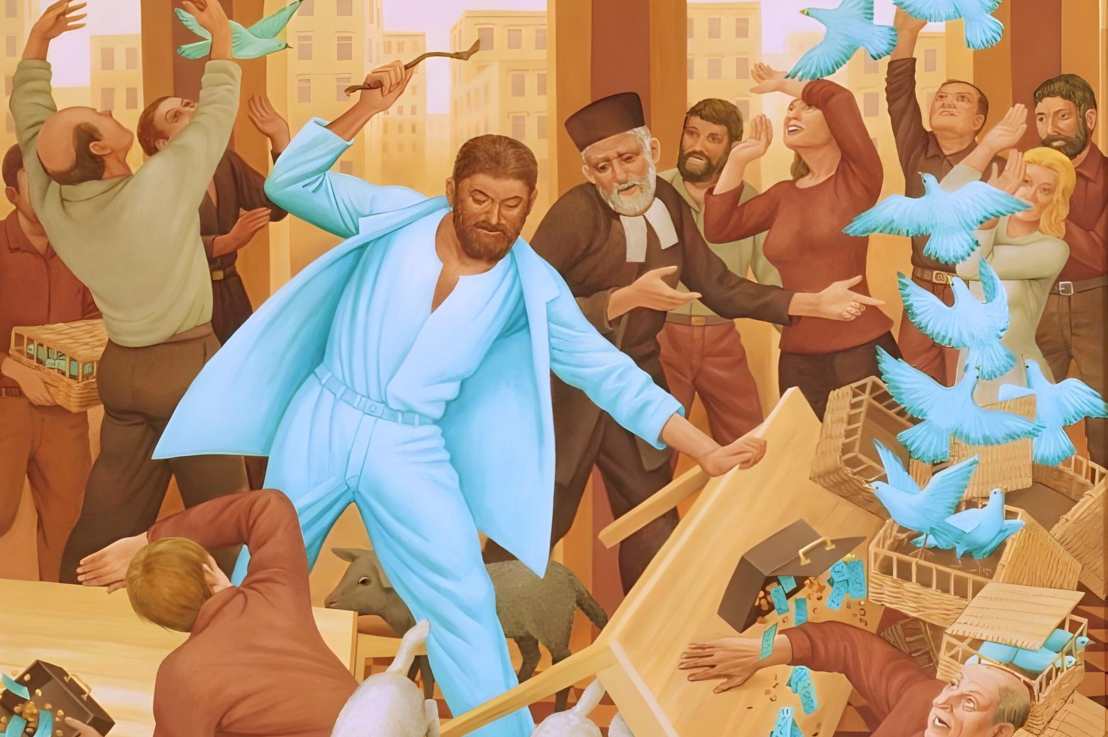The episode of Christ driving merchants out of the Temple of Jerusalem is described in all four gospels (Matthew 21:12-17; Mark 11:15-19; Luke 19:45-48; John 2:13-17). Sometimes the incident is known as the ‘Cleansing of the Temple’. The story is a critique of those who see religion as a money-making enterprise.
St John’s version goes like this: “When the time of the Passover of the Jews was near, Jesus went up to Jerusalem. In the temple he found people selling cattle, sheep, and doves, as well as money changers seated at their tables. Making a whip of cords, he drove them all out of the temple, including the sheep and the cattle. He also overturned the tables of the money changers, scattering their coins, and to those who were selling the doves he ordered, “Take them out of here! Stop turning my Father’s house into a marketplace!” His disciples recalled the words of Scripture, “Zeal for your house will consume me.” (John 2:13-17)
Preaching on this passage, Pope St John Paul II said: “The Lord’s “severe” attitude might seem in contrast to the customary gentleness with which he approaches sinners, heals the sick and welcomes the little and the weak. To look closely, however, gentleness and severity are expressions of the same love which can be tender or demanding according to need. Genuine love is always accompanied by the truth.”
He continued: “Jesus’ zeal and love for the Father’s house certainly does not stop at a temple of stone. The whole world belongs to God and must not be profaned. By his prophetic act, mentioned in this Gospel text, Christ puts us on guard against the temptation to “trade” even in religion, by bending it to wordly or in any case extraneous interests.”
The other three gospels include a slightly different version of the story. While in St John’s gospel, the episode takes place at the start of Christ’s ministry, in the others it occurs during Holy Week, just before he died. There are also some other differences (e.g. only St John mentions a whip, while St Mark says that Christ stopped other people as well as the merchants).
Some scholars believe that Christ cleared the temple courts twice – once at the start of his ministry, and a second time at the end. Others argue that he only did it once – and that all four gospels tell the same story – but that St John chose to include it up front for editorial reasons.
This striking oil painting of Christ clearing the Temple was produced by the artist Peter Koenig in 1965. It now hangs within the church hall of St Edward’s, Kettering, along with other examples of his work. The scene, painted in a neo-iconic style, features people from the modern day in the gospel story.
Christ, dressed in turquoise and clutching a whip, stands out against the muted background of the temple precinct and its visitors. The painting captures the drama of the moment, with the tables in the act of being overturned and doves escaping everywhere.
See the full image:

Where to find this work of art
St Edward’s, Kettering
Read the relevant passage
John 2:13-22
On a similar theme
- From the Old Testament: The Prophet Jeremiah stood outside the Temple of Jerusalem and denounced those who had turned it into a ‘den of robbers’ (Jeremiah 7:1-11).
- From the New Testament: St Matthew says that after driving out the merchants, Christ continued his healing ministry by curing the sick in the Temple (Matthew 21:14).
